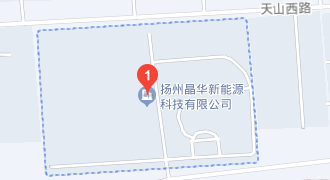Salt spray corrosion level test for photovoltaic modules
发布日期:2018-05-17 浏览次数:
Photovoltaic (PV) modules are electrical devices that are used for continuous field exposure during their lifetime. In some special geographical conditions, such as saline and alkaline lands, coastal areas, and other places, the highly corrosive humid atmosphere may ultimately lead to the corrosion of some photovoltaic module components (metal components, and the deterioration of the function of some non-metallic materials, such as protective coatings and backplates) through long-term assimilation of small droplets of salt in the atmosphere, resulting in sexual hazards, thereby affecting their operational functions. Salt spray corrosion is the most common and destructive atmospheric corrosion.
The salt spray inspection standard is a type of reliability environmental inspection that primarily uses artificial simulated salt spray environmental conditions created by salt spray inspection equipment to verify the corrosion resistance of products, metal coatings, or metal alloy products. Environmental simulation testing is conducted through clear and specific regulations on temperature, humidity, sodium chloride dissolved concentration, and pH value, as well as technical requirements for the function of the salt spray test chamber. The third version of the salt spray inspection standard for photovoltaic modules is about to be released. Huayang Testing, as a professional inspection and testing organization for photovoltaic work, first introduced salt spray level 8 equipment, so that the technology can be completely upgraded and meet all the salt spray level inspection requirements in the new standard.
The third edition of IEC 61701 Salt Spray Inspection Standard for Photovoltaic Modules replaces the second edition issued in 2011.
Other major technical changes related to the previous version are as follows:
1. The scope has been updated to better reflect the applicability of this standard.
2. The test methods and requirements have been condensed and are consistent with the new editions of IEC 61215-1, IEC 61215-2, and IEC 61730-2. Crystal silicon and thin film technology are no longer mentioned. The old Figure 2 on the film inspection sequence has been eliminated.
3. The salt spray inspection reference has been updated to align with changes to IEC 60068-2-52.
4. Standard Appendix A has been added to teach which inspection methods in IEC 60068-2-52 are suitable for different applications. This includes references to the new test methods in the new edition of IEC 60068-2-52.
The inspection sequence that can be used to confirm the corrosion resistance of different photovoltaic modules to salt mist containing Cl (NaCl, MgCl ₂, etc.) is introduced. All tests included in the sequence are well described in IEC 61215-2, IEC 62108, IEC 61730-2, and IEC 60068-2-52. The bypass diode function test has been corrected from the description in IEC 61215-2. A method is provided to evaluate the shortcomings that may arise in photovoltaic components when operating in humid environments with high dissolved salt (NaCl) concentrations. According to the specific properties of the surrounding atmosphere exposed by the module during actual operation, several inspection methods defined in IEC 60068-2-52 can be selected. Provides guidelines for applicability and selection of appropriate methods.
The sample requirements are the same as the previous version, with 1 operation control+2 inspection pieces. Each time a sample is tested, operational controls should be used for inspection to evaluate the effectiveness of the salt spray test.
All test samples shall undergo electrical stability procedures in accordance with MQT 19 in IEC 61215-2 and any technical specific requirements in the IEC 61215-1-x series.
IEC 60068-2-52 includes eight inspection methods consisting of four independent cycles. Test methods 1 to 7 were performed in a 5% NaCl solution with a neutral pH, while test method 8 was performed in a 5% NaCl solution acidified to a pH of 3.5. Test methods 1 and 2 include stable wet conditions with intermittent salt spray. Test methods 3-6 are based on a 7-day cycle, which includes intermittent salt fog, high humidity conditions, and a 3-day monotonic and relaxation period under standard atmospheric conditions. Test methods 7 and 8 were developed for materials in the automotive industry, including an eight hour cycle (including salt spray) followed by rapid monotonization of the air and subsequent re wetting at high humidity.
Recommendations for selecting inspection methods 1 to 8
The severity of the salt spray inspection should be selected based on the atmospheric corrosion conditions prevalent in the orientation of the photovoltaic modules of the equipment. The corrosivity classifications C1 to CX in ISO 9223 can be used as a guide to confirm whether this document is to be used as a specific certification sequence and to select appropriate inspection methods. For equipment in C3 or higher corrosive environments, it is recommended to perform inspections in accordance with this document.
C1 and C2 represent environments with low corrosivity, typically in arid climates. The C1 environment is rare, and areas that are completely exposed in the natural environment may not exist, but the C2 environment is common in monotonous areas far from salt water bodies. C3 environments are common in highly industrialized areas, areas about 2 to 10 kilometers from salty water bodies, or areas with high humidity for most of the year. C4 and C5 environments are highly corrosive and generally very close to saline bodies. The CX polar corrosivity category has been added to the original classification to represent the offshore environment, such as the environment experienced by the floating equipment of modules or channels used for offshore oil and gas extraction. The use of salt for deicing or dust handling can create highly corrosive areas that may not be captured in the disclosed tools and corrosivity classification charts.
Although it is possible to associate the inspection method with the ISO 9223 corrosivity classification, caution should be exercised, as these classifications represent the impact of exposure on the exposed metal plate for one year, but do not necessarily represent the impact of the same environment on photovoltaic modules. None of these inspection methods can represent the use of life testing.
Test method 1
Similar to inspection method 5, this method can complete the equivalent of one year of steel quality loss in a C4 environment. The IEC 60068-2-52 standard describes this method as suitable for use in the marine environment, but this only applies to general certification regarding photovoltaic modules, which in many cases are not expected to have a useful life.
Test method 2
In a C2 environment, this method can complete the equivalent of one year of steel quality loss. Due to its short duration, it should not be used for modules intended to be continuously exposed in the field. Generally, Inspection Method 2 is used for products that are not generally affected by corrosive environments but may occasionally be exposed during use or transportation, such as inspection equipment.
Test methods 3 to 6
During the monotonic phase of the cycle, the concentration of NaCl will be partially added to the sample until precipitation is formed, which generally accelerates the corrosion process. However, once the adjacent portion of the sample RH reaches standard conditions, these processes typically terminate. Relaxation time may be useful for performing intermediate evaluations of samples.
The completion of Test Method 3 in a C2 environment is equivalent to one year of steel quality loss. Due to its short duration, it should not be used for modules intended to be continuously exposed in the field.
The completion of Test Method 4 in a C3 environment is equivalent to one year of steel quality loss. Therefore, it can be used as a general condition test.
The inspection method 5 is the same as the inspection method 1, and the completion in C4 environment is equivalent to one year of steel quality loss. Therefore, it is suitable for the determination of components that may be located adjacent to the paved surface of an ocean, salt lake, or deicer. Salt is used, but the orientation of the salt is lacking enough proximity to allow for direct spraying or splashing.
The completion of Test Method 6 in a C5 environment is equivalent to a year of steel quality loss. Therefore, it is suitable for equipment on modules that are close enough to the ocean or frozen roads to prevent them from intermittently spraying or splashing through the effects of waves or wind.
Test methods 7 and 8
Inspection methods 7 and 8 were developed for car parts and coatings, and are considered the most severe inspection methods within the same time frame. Their applicability to photovoltaic modules is unknown. However, these methods may be useful for applications where modules known to be used in CX environments or modules known to have passed other inspection methods have corrosion related shortcomings in their application. In addition, these methods may be useful for specific applications such as on mobile vehicles or navigation vessels. Test Method 7 uses the same neutral pH solution as Methods 1 to 6, while Test Method 8 uses acidic solutions, which may be useful for applications with severe industrial pollution.
"We carefully inspect and never forget our original intention, and always strive to provide better and comprehensive service.".








